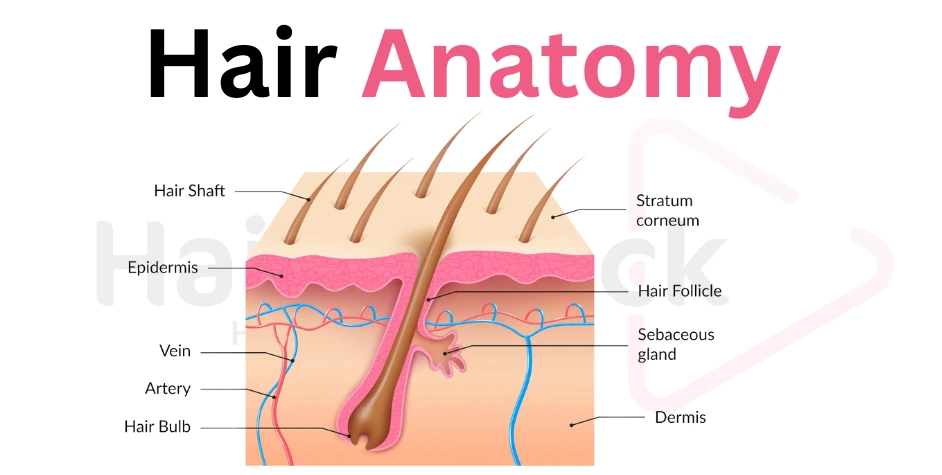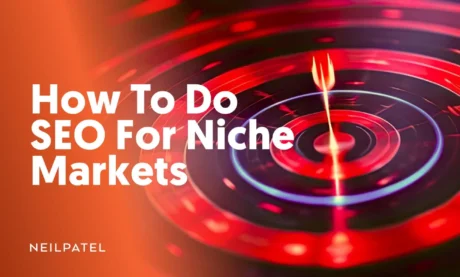CelebrityStyles

Celebrity
Styles
Blogs
Images
Videos
Facebook
X-twitter
Reddit
Pinterest
Whatsapp
Linkedin
Topics

Hair Anatomy

Types of Hair Loss
- Introduction
- Key Takeaways
- Table of Contents
- Conclusion
- FAQs

Hair Loss Diagnosis
- Introduction
- Key Takeaways
- Table of Contents
- Conclusion
- FAQs

Hair Loss Treatments
- Introduction
- Key Takeaways
- Table of Contents
- Conclusion
- FAQs

Surgical Hair Restoration
- Introduction
- Key Takeaways
- Table of Contents
- Conclusion
- FAQs

Scalp and Hair Health
- Introduction
- Key Takeaways
- Table of Contents
- Conclusion
- FAQs

Hormonal Influence
- Introduction
- Key Takeaways
- Table of Contents
- Conclusion
- FAQs

Psychological Impact
- Introduction
- Key Takeaways
- Table of Contents
- Conclusion
- FAQs

Hair Disorders
- Introduction
- Key Takeaways
- Table of Contents
- Conclusion
- FAQs

Hair Anatomy

Types of Hair Loss
- Introduction
- Key Takeaways
- Table of Contents
- Conclusion
- FAQs
- Introduction
- Key Takeaways
- Table of Contents
- Conclusion
- FAQs

Hair Loss Diagnosis
- Introduction
- Key Takeaways
- Table of Contents
- Conclusion
- FAQs
- Introduction
- Key Takeaways
- Table of Contents
- Conclusion
- FAQs

Hair Loss Treatments
- Introduction
- Key Takeaways
- Table of Contents
- Conclusion
- FAQs
- Introduction
- Key Takeaways
- Table of Contents
- Conclusion
- FAQs

Surgical Hair Restoration
- Introduction
- Key Takeaways
- Table of Contents
- Conclusion
- FAQs
- Introduction
- Key Takeaways
- Table of Contents
- Conclusion
- FAQs

Scalp and Hair Health
- Introduction
- Key Takeaways
- Table of Contents
- Conclusion
- FAQs
- Introduction
- Key Takeaways
- Table of Contents
- Conclusion
- FAQs

Hormonal Influence
- Introduction
- Key Takeaways
- Table of Contents
- Conclusion
- FAQs
- Introduction
- Key Takeaways
- Table of Contents
- Conclusion
- FAQs

Psychological Impact
- Introduction
- Key Takeaways
- Table of Contents
- Conclusion
- FAQs
- Introduction
- Key Takeaways
- Table of Contents
- Conclusion
- FAQs

Hair Disorders
- Introduction
- Key Takeaways
- Table of Contents
- Conclusion
- FAQs
- Introduction
- Key Takeaways
- Table of Contents
- Conclusion
- FAQs

Short & Medium Styles
- Introduction
- Key Takeaways
- Table of Contents
- Conclusion
- FAQs
- Introduction
- Key Takeaways
- Table of Contents
- Conclusion
- FAQs

Long & Flowing Hair
- Introduction
- Key Takeaways
- Table of Contents
- Conclusion
- FAQs
- Introduction
- Key Takeaways
- Table of Contents
- Conclusion
- FAQs

Textured, Braided & Curly
- Introduction
- Key Takeaways
- Table of Contents
- Conclusion
- FAQs
- Introduction
- Key Takeaways
- Table of Contents
- Conclusion
- FAQs

Formal Updos & Accessories
- Introduction
- Key Takeaways
- Table of Contents
- Conclusion
- FAQs
- Introduction
- Key Takeaways
- Table of Contents
- Conclusion
- FAQs

Color Trends & Bold Choices
- Introduction
- Key Takeaways
- Table of Contents
- Conclusion
- FAQs
- Introduction
- Key Takeaways
- Table of Contents
- Conclusion
- FAQs
In The News
Take A Hair Test
I’m Dr. Amit Agarkar, a dermatologist and trichologist with over 20 years of experience in helping people regain their hair and confidence. Let’s dive into a topic that affects millions of women—hair loss. It’s a common issue, but it doesn’t have to be your forever reality. Today, I’m going to break down why women experience hair loss, what you can do about it, and the treatments that work best based on my own professional experience
Consult Dr.Agarkar
Article/Celebrity Styles/short-and-medium-length-hairstyles/
Short and Medium-Length Hairstyles:
A Comprehensive Guide

Creator & Author: Dr. Amit Agarkar | M.B.B.S, MD Dermatologist, Trichologist & Hair Transplant Surgeon.
Published on : 28/01/2025 Time: 12:00
LastUpdated on : 28/01/2025


Introduction:
Hairstyles are more than a fashion statement—they’re an expression of personality and individuality. Whether you’re drawn to the boldness of short hairstyles or the versatility of medium-length looks, choosing the right style can transform your appearance and boost your confidence. Over the years, I’ve helped countless patients embrace hairstyles that not only suit their facial features but also cater to their lifestyle needs. Let’s explore the world of short and medium-length hairstyles, offering insights and professional tips to help you make the perfect choice.
Key Takeaways:
-
Short Hairstyles are ideal for low-maintenance and stylish looks.
-
Medium-Length Hairstyles offer a balance between versatility and sophistication.
-
Bob and Layered Hairstyles remain timeless choices for all hair types.
-
Proper maintenance and the right products can enhance any hairstyle
Table of Contents
1. The Charm of Short Hairstyles
2. Medium-Length Hairstyles: The Perfect Middle Ground
3. Why Bob Hairstyles Are Always in Vogue
4. The Power of Layers for Volume and Texture
5. Wavy Hairstyles: Adding Effortless Glam
6. Choosing the Best Haircut for Your Face Shape
7. Top Haircut Trends for 2024
8. Styling Tips for Easy Maintenance
9. Products to Complement Short and Medium Hairstyles
10. Professional Advice on Haircare Routines
Detailed Description of Each Section
1.The Charm of Short Hairstyles
Hello! I’m Dr. Amit Agarkar, and I’m here to guide you through the fascinating world of short hairstyles. For many, choosing a shorter cut is not just about style—it’s an empowering decision that combines confidence, elegance, and practicality. Let’s explore some popular short hairstyles and how you can make them work beautifully for you.
Popular Short Hairstyles
Pixie Cut: This timeless classic features short hair on the sides and back, with slightly longer hair on top. It’s fantastic for highlighting facial features and offers versatile styling options, from sleek and polished to playful and tousled. Learn more about pixie cuts here.
Asymmetrical Bob: A modern take on the traditional bob, this cut features one side longer than the other for a bold and striking look. It’s ideal for adding volume and texture to your hair while maintaining a chic, edgy vibe. Discover asymmetrical bobs.
Layered Bob: Perfect for fine hair, a layered bob adds depth and movement. These layers can create a dynamic look that enhances your hair’s natural shape. Check out layered bob inspirations.
Choppy Bob: This trendy haircut incorporates textured layers, adding volume and edge. It’s an excellent choice for various hair types, from straight to wavy. Explore choppy bob styles.
Blunt Bob: Sleek and sophisticated, this style eliminates layers to give the illusion of thicker, fuller hair. It’s perfect for anyone looking for a polished and refined look. Blunt bobs explained.
Textured Pixie: A modern twist on the classic pixie, this cut adds choppy layers for extra volume and a trendy flair. It’s low-maintenance yet incredibly stylish. Learn about textured pixie cuts.
Styling Tips for Short Hair
When choosing a short hairstyle, consider how it will complement your face shape, natural hair texture, and personal style. Here are a few practical tips:
- Use Volumizing Products: Enhance your look with volumizing sprays or powders that add body without weighing down your hair. Best volumizing products.
- Experiment with Bangs: Bangs can frame your face beautifully and create additional volume, offering a versatile twist to any short style. Guide to bangs for short hair.
- Embrace Your Texture: Short hairstyles work well with various hair textures. Whether your hair is straight, wavy, or curly, choosing the right cut can enhance and celebrate your natural look. How to style different hair textures.
Remember, short hairstyles are more than just a haircut; they’re an expression of who you are. Whether you opt for a bold pixie cut or a chic asymmetrical bob, these styles allow you to showcase your personality with flair. And as always, if you have any questions or need advice on finding the perfect look, feel free to ask. I’m here to help!

2. Hair Growth Cycle Explained
Ever wonder why your hair seems to shed all at once, or why certain spots grow slower? It’s all about the hair growth cycle There are three phases: anagen (the growing phase),
catagen (the transitional phase), and telogen (the resting or shedding phase). On average, 90% of your hair is in the anagen phase at any given time, which can last anywhere from 2 to 6 years. After this, it moves through catagen and eventually into telogen,where the hair naturally sheds, making way for new growth.
I always remind my patients—shedding is part of the cycle! If you’re noticing more hair fall than usual, it could be due to stress, hormones, or other health factors affecting the cycle’s balance.
3. Scalp Health: The Foundation of Healthy Hair
I often tell my patients that their scalp is just as important as their hair. It’s the soil in which your hair grows, and healthy soil equals healthy crops. Your scalp’s sebaceous glands produce natural oils that keep your hair moisturized. However, an imbalance in oil production can lead to problems like dandruff, itching, and even hair loss.
By maintaining a proper scalp care routine—regular cleansing, gentle exfoliation, and moisturizing—you’ll create the ideal environment for your hair to thrive. I’ve seen patients with severe scalp issues transform their hair by focusing on this simple but often overlooked area.
4. Hormonal Influence on Hair Growth
One of the most common causes of hair issues is hormonal changes.Whether it’s the surge of hormones during pregnancy or the decline during menopause, these shifts can have a profound impact on your hair follicles. Androgens, for instance, can shrink follicles, leading to thinning hair in both men and women. On the other hand, estrogen tends to prolong the anagen (growth) phase, which is why some women experience fuller hair during pregnancy.
5. The Genetic Component of Hair Health
If you’ve ever wondered why your father or mother had thinning hair and you seem to be following the same pattern, genetics could be to blame. Male and female pattern baldness are often inherited, but that doesn’t mean there’s nothing you can do. There are numerous treatments available, from medications like minoxidil to hair transplants, to help slow down or even reverse hair loss.
6. Hair Follicle Disorders and Solutions
In my clinic, I often see patients suffering from alopecia, an autoimmune condition where the body attacks its own hair follicles, causing hair loss. Another common issue is folliculitis, where the follicles become inflamed, leading to discomfort and sometimes infection. Thankfully, there are effective treatments for both conditions, ranging from medicated shampoos to more advanced therapies like PRP (Platelet-Rich Plasma) injections.
7. Practical Hair Care Tips for Daily Health
Here’s the fun part—how you can take control of your hair health at home! First off, always choose products tailored to your hair type. If you’re unsure, start with sulfate-free shampoos and conditioners, as they tend to be gentler. Secondly, nutrition plays a huge role in hair health. Foods rich in biotin, iron, and vitamin D can help keep your hair strong and promote growth. Lastly, when it comes to styling, remember: heat and chemicals are your hair’s enemies. Use protective sprays and minimize the use of hot tools.
Frequently Asked Questions :
1. What are the main parts of hair anatomy?
Hair consists of the cuticle, cortex, and medulla, each playing a crucial role in protecting and strengthening your hair.
2. How does the hair growth cycle work?
Hair grows in three phases: anagen (growth), catagen(transition), and telogen (rest). The balance of these phases determines hair health.
3. Can hormones cause hair thinning?
Yes, hormonal changes, especially in androgens, can lead to shrinking hair follicles and thinning hair, particularly during pregnancy or menopause.
4. Is hair loss genetic?
Yes, male and female pattern baldness are commonly inherited, but treatments can help slow or reverse the process.
5. How can I improve my scalp health?
Regular scalp care, such as cleansing, moisturizing, and avoiding harsh chemicals, can maintain a healthy environment for your hair to grow.
6. What are common hair follicle disorders?
Common disorders include alopecia (hair loss) and folliculitis (inflammation of the follicles). Both are treatable with proper care.
7. What should I eat for better hair growth?
Include foods rich in biotin, iron, and vitamin D in your diet to promote healthy hair growth.
8. Are there treatments for hair loss?
Yes, treatments range from topical solutions like minoxidil
to advanced options like hair transplants and PRP therapy.
9. How often should I wash my hair?
It depends on your hair type. Oily hair
may need more frequent washing, while dry hair can be washed less often to retain moisture.
10. Can I reverse hair thinning naturally?
While some natural treatments like diet
and stress management can help, medical treatments may be necessary for more severe cases.
Conclusion :
Caring for your hair doesn’t have to be complicated. With a better understanding of your hair anatomy, the growth cycle, and the impact of hormones and genetics, you can take proactive steps toward healthier, stronger hair. Remember, a healthy scalp is where it all begins, so don’t forget to care for that too!
If you’re struggling with hair loss, thinning, or any scalp-related concerns, don’t hesitate to reach out. Book a consultation today, and let’s create a personalized hair care plan that works for you!
Ready to take control of your hair health? Take our online hair test at HairsnCares.com! It’s quick, easy, and can be done from any device. Get personalized solutions, including a virtual consultation with me, and have your custom hair care products delivered right to your door!
Tags
HairLoss
HairTransplant
HairStyles
You May Also Like

Mastering Brevity: Clear & Concise Content Marketing Tips

How to Do SEO for Niche Markets

Understanding AI Overview Fails: Pitfalls and How to Avoid Them


